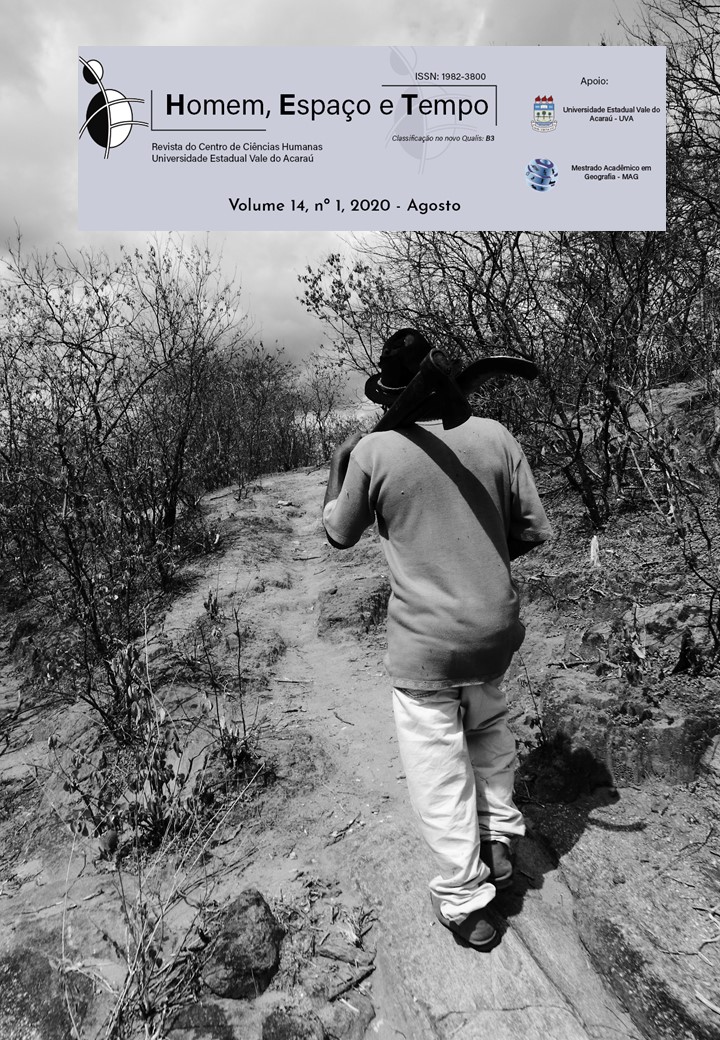THE SUPERVISED CURRICULAR INTERNSHIP IN GEOGRAPHY AND THE USE OF PRINTED MEDIA IN ELEMENTARY EDUCATION: EXPERIENCE REPORTS
Keywords:
Estágio Curricular; Formação de Professores; Mídias impressas., Curricular Internship; Teacher training; Printed media, Pasantía Curricular; Formación de profesores; Medios impresos.Abstract
The importance of the Curricular Internship for the undergraduate student, according to Pimenta and Lima (2009), lies in providing an approximation to the reality of the future field of work in which he/she will perform. In the internship, the conditions for reflective professional practice are created and learning about teaching practice and teaching action are acquired and, in a special way, reflection on teaching-learning Geography is promoted. Among the objectives of the experience with the Supervised Curricular Internship in Geography III, held in the semester 2012.2, in the Geography course at the Federal University of Ceará, the following stand out: planning classes for the final years of elementary school, using printed media to promote geographic literacy according to the proposal for this phase; and contribute to the formation of critical and reflective teachers. Thus, we seek to innovate in teaching practices, creating problem situations for geographical themes. Discussions of texts were carried out at the university, visits to school to observe the teaching-learning, as well as to analyze the didactic resources, the physical space, the pedagogical and administrative structure and, still, to conduct the teaching. Teaching practice took place by planning three activities in the classroom: 1) the newspaper; 2) the chronicles; and 3) the comic strips and cartoons. This activity was fundamental for the teacher in training because, for the fact it was the first conducting experience in the classroom, it contributed to reflect on the possibility of using, on the spot, didactic resources of easy access and low cost.Downloads
References
FARIA, M. A. de O. Como usar o Jornal em sala de Aula. 11. ed. São Paulo: Contexto, 2011.
KENSKI, V. M. O ensino e os recursos didáticos em uma sociedade cheia de tecnologia. In: VEIGA, I. P. A. (Org.). Didática: o ensino e suas relações. 9. ed. Campinas, SP: Papirus, 2005.
PASSINI, E. Y. Introdução. In: PASSINI, E. Y.; PASSINI, R.; MALYSZ, S. T., (Orgs.). Prática de ensino de geografia e estágio supervisionado. São Paulo: Contexto, 2007, pp. 11-15.
PIMENTA, S. G.; LIMA, M. S. L. Estágio e Docência. 4. ed. São Paulo: Cortez, 2009.
SEED. Diretrizes Curriculares de Geografia Para os Anos Finais do Ensino Fundamental e Para o Ensino Médio. Curitiba, 2008.
SILVA, E. I. Charge, cartum e quadrinhos: linguagem alternativa no ensino de Geografia. Revista Solta a Voz, Goiânia, v. 18, n.1, p. 41-49, jan./jun. 2007.
SILVA, R. C. da. A auto avaliação como instrumento de conscientização de alunos de um curso de especialização Lato Sensu. Olhar de professor, Ponta Grossa, v. 10, n. 2, p. 101-115, 2007.
SOUSA, M. F de. Aula de Geografia e algumas crônicas. 2. ed. Campina Grande: Bagagem, 2008, pp. 80-83.
TEIXEIRA, F. F.; TUBINO, V. M. C.; SUZUKI, J. C. Geografia e Literatura: uma alternativa para o ensino da questão indígena em sala de aula. In: V Encontro de Grupos de Pesquisa “Agricultura, desenvolvimento regional e transformações socioespaciais”, Santa Maria, 2009. Disponível em: <https://www.yumpu.com/pt/document/read/5507036/geografia-e-literatura-uma-alternativa-para-o-ufsm>. Acesso em: 7 jan. 2020.
Downloads
Published
How to Cite
Issue
Section
License
Autores que publicam nesta revista concordam com os seguintes termos: Autores mantêm os direitos autorais e concedem à RHET o direito de primeira publicação, com o trabalho simultaneamente licenciado sob a Creative Commons Attribution License, que permite o compartilhamento do trabalho com reconhecimento da autoria do trabalho e publicação inicial nesta revista. Autores têm autorização para assumir contratos adicionais separadamente, para distribuição não exclusiva da versão do trabalho publicada nesta revista (ex.: publicar em repositório institucional ou como capítulo de livro), com reconhecimento de autoria e publicação inicial nesta revista. Autores têm permissão e são estimulados a publicar e distribuir seu trabalho online (ex.:em repositórios institucionais ou na sua página pessoal) após o processo editorial, já que isso pode aumentar o impacto e a citação do trabalho publicado (Veja o Efeito do Acesso Livre). Autores são responsáveis pelo conteúdo constante no manuscrito publicado na revista. Autores são responsáveis por submeter os artigos acompanhados de declaração assinada de um revisor da língua portuguesa, declaração assinada do tradutor da língua inglesa e declaração assinada do tradutor da língua espanhola ou francesa.


